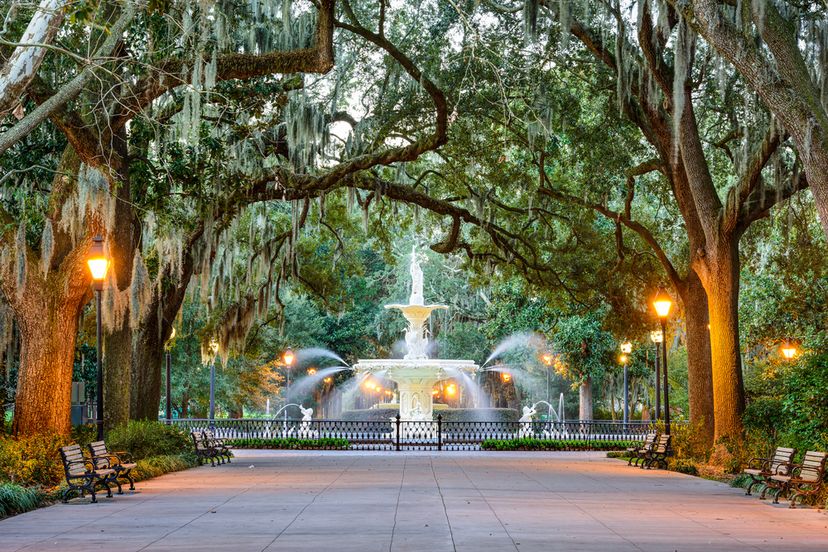
The city of Savannah, Georgia is the oldest city in the state of Georgia, and features a number of historic sites throughout the city and just outside its limits. Initially founded in 1733, Savannah became the British colonial capital of the Province of Georgia. The city has done an excellent job maintaining its rich heritage from the colonial days and on through the development and expansion of the United States. With so many different places to visit, below are 17 things for visitors to see and do in the southern city of Savannah.
Advertisement
17. Skidaway Island State Park
Skidaway Island State Park is a 588-acre park located near Savannah, located on a barrier island that borders Runaway Negro Creek and Skidaway Straights and is part of the Atlantic Intracoastal Waterway. The park features 87 tent/trailer/RV sites, 5 picnic shelters, a group shelter, 3 camper cabins, 3 pioneer campgrounds, 3 playgrounds, and an interpretive center.
Two nature trails in the park wind through marshes, forests and sand dunes, and feature observation towers to provide additional vantage points to scope out the areas flora and fauna. Bird watching is another popular activity at Skidaway Island State Park, along the Colonial Coast Birding Trail. The scenery within Skidaway Island is so popular in fact that the area has developed into a popular spot for wedding ceremonies to be held, with a permit of course.

Advertisement
16. Walking Food Tour
Why waste time researching where to eat when you can hit all the hottest spots on the Savannah Culinary & Cultural Walking Food Tour! This walking food tour not only gives you a taste of some of the best cuisine found in Savannah, but you’ll get to take in Savannah’s history along the way.
You’ll get an intimate experience on this tour as each tour is limited to just 14 people. Be sure to come with an empty stomach as you’ll make many stops along the way — enough for lunch!

Advertisement
15. Grayson Stadium
Originally known simply as the Municipal Stadium, Grayson Stadium opened all the way back in 1926. However, a devastating hurricane in 1940 wracked the original stadium, causing a significant amount of damage. Major renovations occurred in 1941, and leading the fundraising charge was Spanish-American war veteran General William L. Grayson.
half of the funds coming from the Works Progress Association, the stadium was named in recognition for Grayson’s work in helping generate the funds for repairs. Currently, Grayson Stadium is home to the Savannah Sand Gnats, a minor league affiliate to the New York Mets, and formerly played host to the Savannah State University baseball team, and the annual Thanksgiving Day football game between two local high schools. With a capacity of 4,000, the stadium provides an intimate experience for a baseball game, a chance to truly embrace the sport on a more grassroots level.
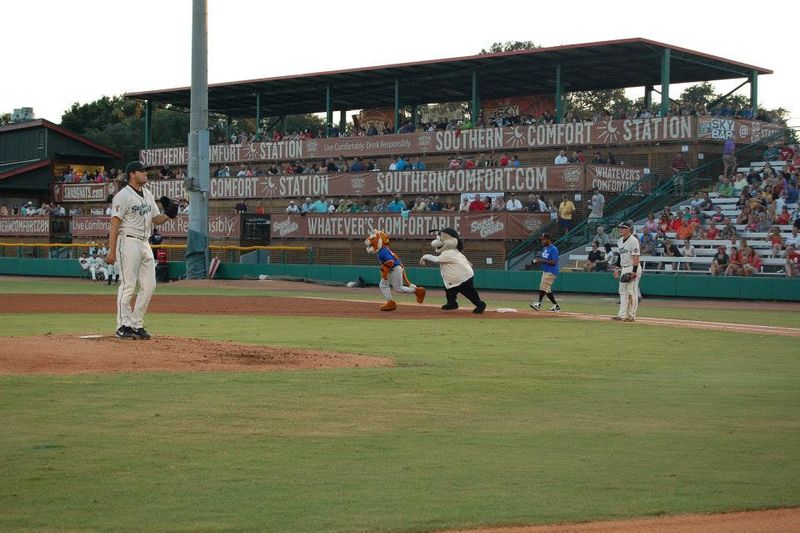
Advertisement
14. Riverboat Sightseeing Cruise
When you need to give your feet a break, sit back and relax on the Savannah Riverboat Sightseeing Cruise! You’ll be able to see the city from a whole new perspective from the water.
There is a wide variety of cruise options to choose from to ensure you find the right one that fits your needs. For example, select cruises have live entertainment as well as meals. Further, the cruises are offered at different times to ensure you can find a time that works best for you.
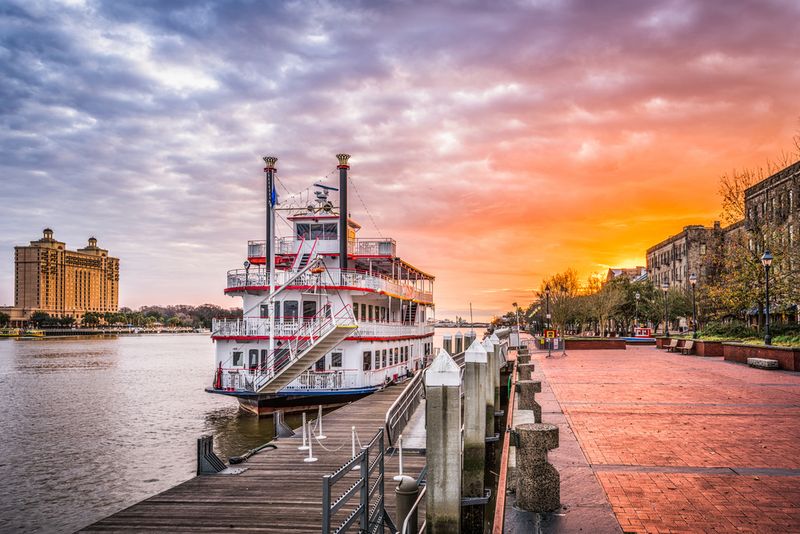
Advertisement
13. First African Baptist Church
First organized in 1773 under the leadership of Reverend George Leile, by 1777 the church was officially constituted as a body of organized believers. With the guide of 3rd Pastor Reverend Andrew Marshall, the congregation came into possession of the present lands for the First African Baptist Church.
Inside the church, the light fixtures, baptismal pool, and 1832 Pipe Organ are all originals to the church. The solid oak pews in the church were installed during the early 1900s and were made by slaves. The ceiling of the building is inspired by the “Nine Patch Quilt” as a representation that the church was a safe house for slaves. In past times, the church served as the largest place for blacks and whites to meet during times of segregation.
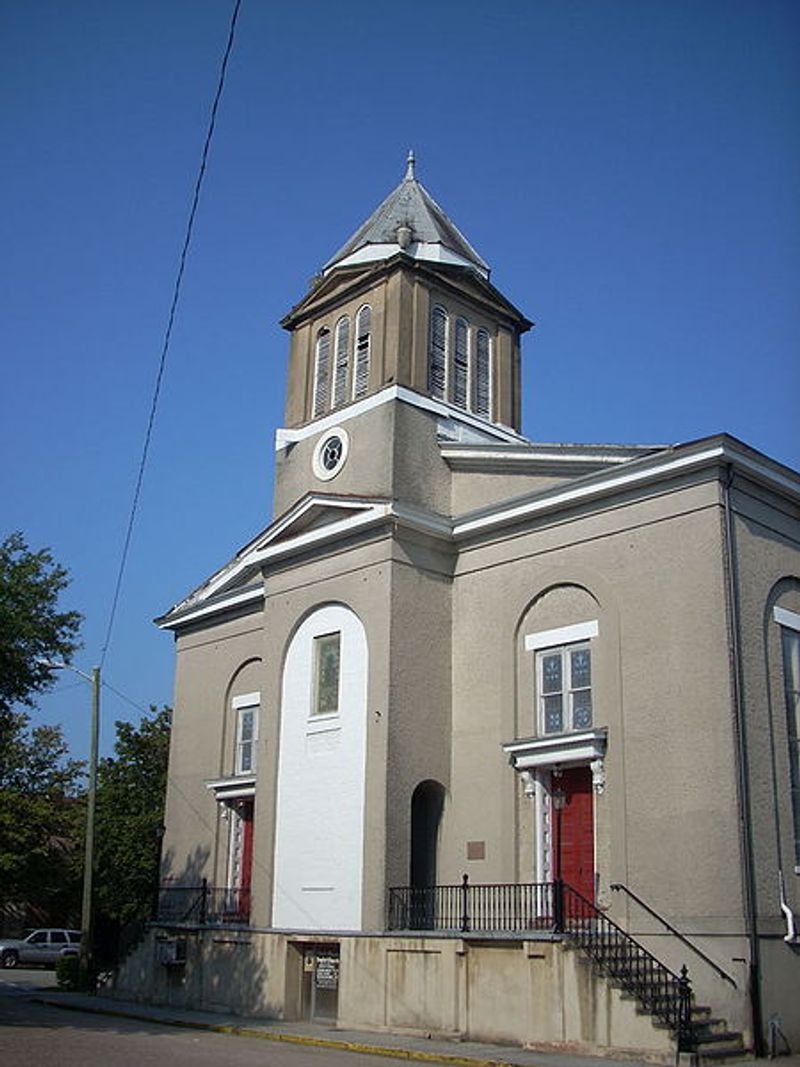
Advertisement
12. Nighttime Ghost Tour
If you’re up for a spooky adventure then check out the Ghost City’s Dead of Night Tour. This tour lets you dig into the haunted history of Savannah and since the tour takes place after dark, it’ll feel even spookier!
The tour will take you to hard-to-find spots that are reputedly haunted in Savannah. Since you’ll be taking the tour on foot, you’ll get a more personal glimpse into Savannah’s spooky past.
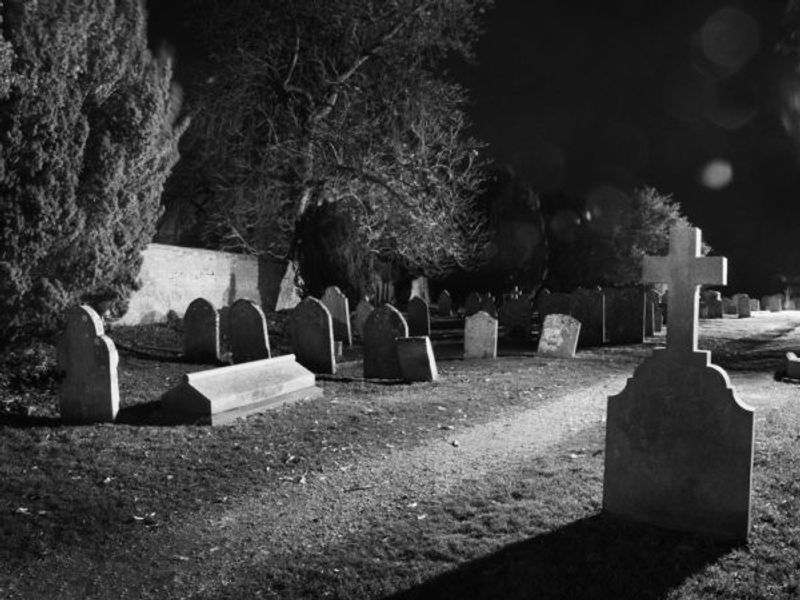
Advertisement
11. Old Fort Jackson
With construction starting in 1808 and wrapping up in 1812, Old Fort Jackson is the oldest standing brick fort in the state of Georgia. Located on the Savannah River, the fort saw action during the War of 1812 before being designated a National Historic Landmark in more modern times. Contrary to most visitors’ first guess, the fort is not named after Andrew Jackson, but rather James Jackson, a British native who fought for the American cause and rose to the rank of Colonel, and accepted the surrender of the British in Savannah at the close of the revolution.
The fort also saw a great deal of action during the Civil War and served as an operational outpost for both Rebel and Union soldiers after it traded hands following a siege. For a time period from 1884 through 1905, the fort was known as Fort Oglethorpe. The city of Savannah purchased the fort in 1924 but didn’t have it fully restored until the 1970s. Visitors now are offered a chance to take a step back through time to a much more turbulent period of history of the United States.
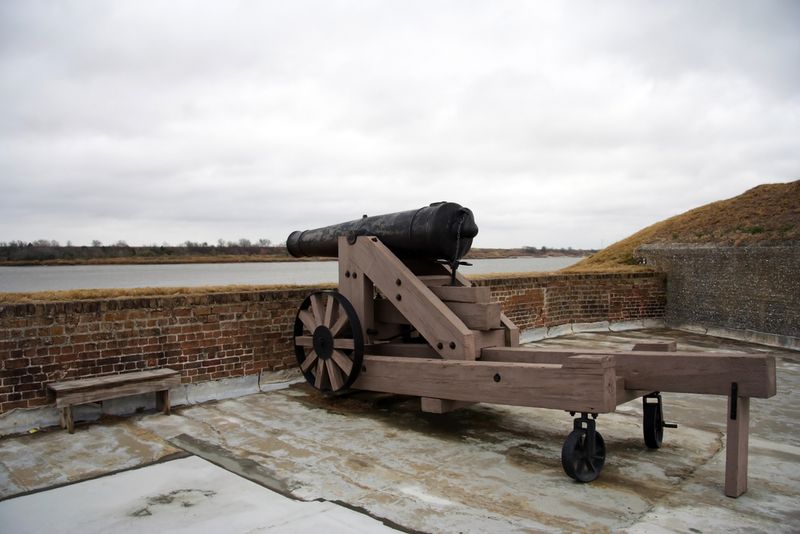
Advertisement
10. Haunted Pub Tour
Calling all beer-enthusiasts, this tour has your name written all over it! The Creepy Crawl Haunted Pub Tour of Savannah gives you a peek into Savannah’s spooky past while getting a tour of the local pubs.
On the tour, you’ll get a complimentary glow-in-the-dark to-go cup that you can use during the pub-crawl. Your first stop is at Six Pence Pub, here you can fill up your cup, and learn about its spooky past. Along with other pubs, you’ll also make a bonus stop at Colonial park Cemetary.

Advertisement
9. Cathedral of St. John the Baptist
Initially in Savannah, the colonial charter prevented Roman Catholics from settling in the city. The English government at the time feared that Catholic settlers would be more loyal to the Spanish (and Catholic) authorities in Florida instead of the English government in Georgia. Shortly after the American Revolution, this practice came to a conclusion. French settlers from Haiti were the first Catholics to settle in the area, with the first church opening in 1799.
After the opening of a second church in 1839, construction began on the Cathedral of St. John the Baptist in 1873 and finally concluded in 1896 with the addition of the iconic spires on the tops of the church towers. The structure was nearly destroyed at one point in 1898 after a fire ripped through the building. Services are still offered at the church today, and the most recent renovations concluded in the year 2000.
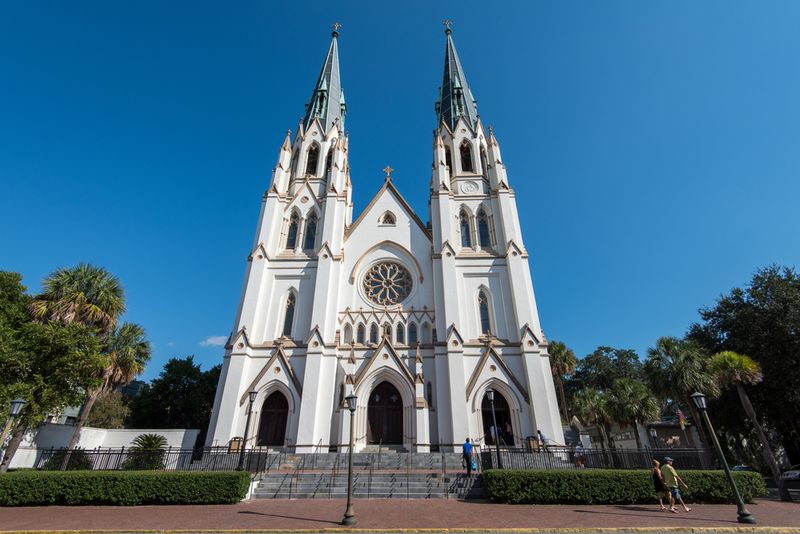
Advertisement
8. Tybee Beach Pier
When you want to escape the hustle and bustle of the city for a relaxing day by the water take a 28-minute drive to Tybee Island and spend the day at the beach! Here you can lounge by the water, pack a picnic or take a stroll on the Tybee Beach Pier.
Further, there are also many local shops where you can take in the work of local crafters and artisans. You can also grab a drink or a bite from one of the local restaurants.
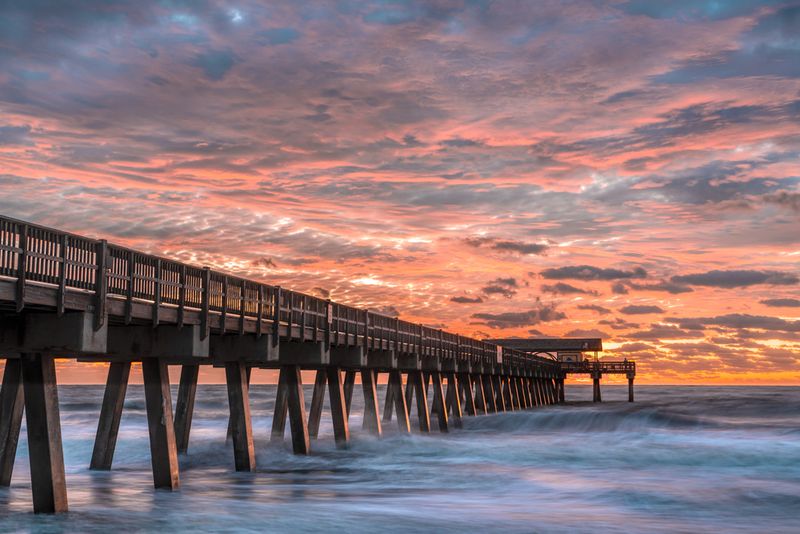
Advertisement
7. Bonaventure Cemetery
Perhaps not traditionally the first thing that pops to mind for tourism, a cemetery can seem like an odd destination to visit. However, Bonaventure Cemetery, the largest municipal cemetery in Savannah, covers some 160-acres of land.
This cemetery, in particular, became famous when it was featured in the novel Midnight in the Garden of Good and Evil by John Berendt, and subsequently in the movie directed by Clint Eastwood based on the book. The cover of the book, featuring the Bird Girl sculpture was virtually unknown for some 50 years in the cemetery prior to being featured as the cover art. After rising to fame, the sculpture was donated to Savannah’s Telfair Museum of Art to avoid any potential disturbances at the site. Bonaventure Cemetery is also a great option for travelers on a budget, since there are no admission fees, of course.
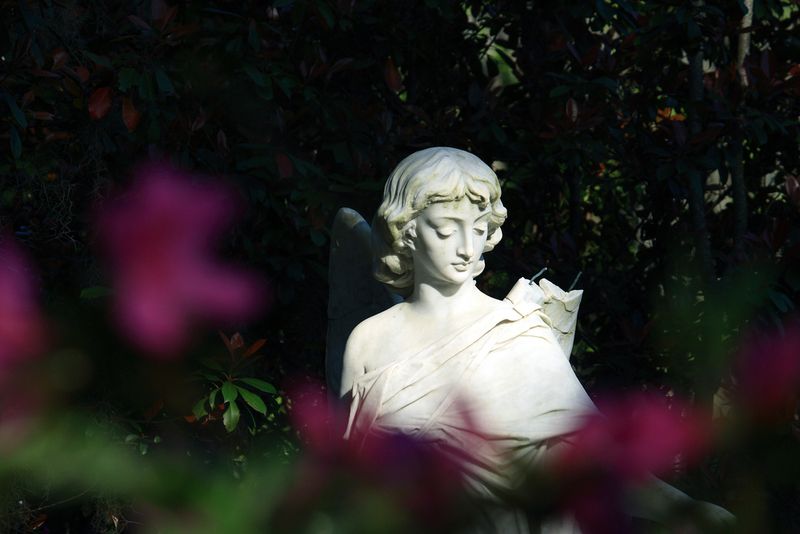
Advertisement
6. Hop-On and Hop-Off Trolley Tour
Explore Savannah at your pace on the Historic Hop-On and Hop-Off Trolley Tour of Savannah. This tour allows you to make your own itinerary and allows you to spend as much or as little time at each stop.
The trolly makes 15 stops throughout the city so you’ll have plenty of opportunities to explore Savannah’s Historic District. The trolly comes every 20 minutes or so, so you can hop back on when you’re ready!
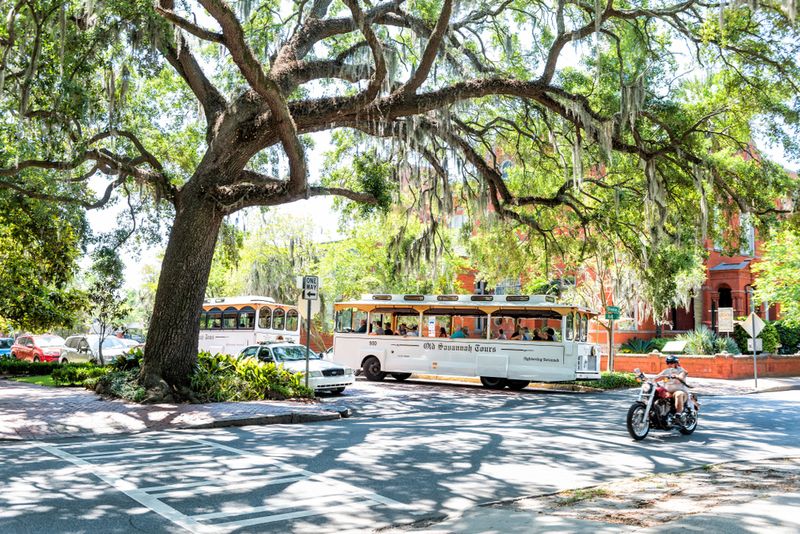
Advertisement
5. Forsyth Park
Slightly smaller than the gigantic cemetery mentioned above, Forsyth Park is a large city park that covers some 30-acres of the Savannah Historic District. Inside the park, visitors can find walking paths, a children’s play area, a fragrant garden (a garden specifically designed for the blind), a large fountain, tennis courts, basketball courts, and areas for soccer, frisbee and is even the home of the Savannah Shamrocks Rugby Club.
If that wasn’t enough, the park is also occasionally home to concerts to benefit the public. Originally opened in the 1840s as just 10-acres the park expanded and was named after Georgia Governor John Forsyth. The park also includes a memorial to Confederate volunteers who gave their lives during the Civil War. The park is an important urban feature to Savannah, as it is modeled after the Parisian style of urban planning focused on creating residential areas radiating out from a central green space.
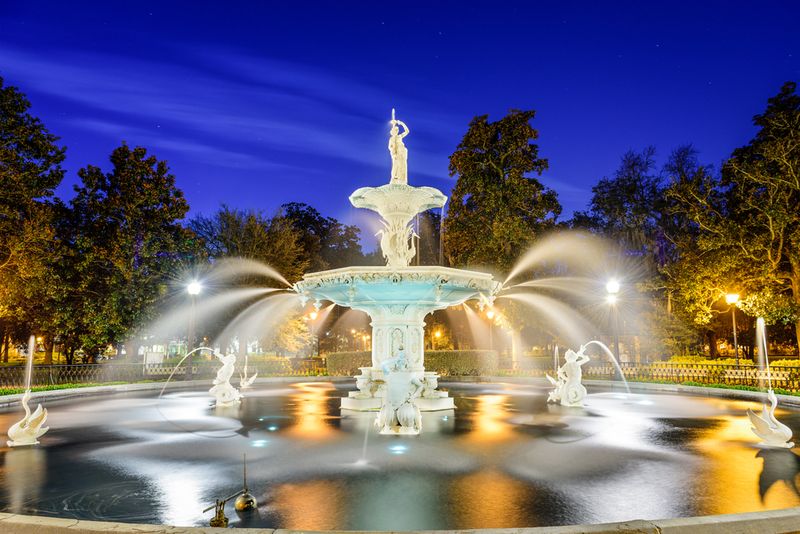
Advertisement
4. Savannah History Museum
Enjoy a brief introduction into Savannah’s history at the Savanah History Museum. The museum is located in the former historic Central of Georgia Railroad’s passenger station.
Here you will get a glimpse into Savannah’s history from modern-day to dating back to 1733. Learn about Savannah’s culture, music, and artistic contributions through the exciting exhibits. You’ll also get to see the famous bench from Forrest Grump!
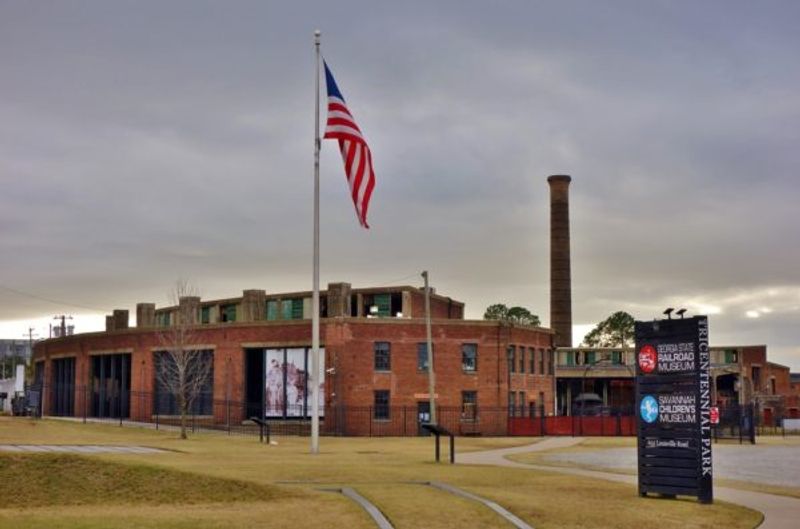
Advertisement
3. Pin Point Heritage Museum
In 1985 the A.S. Varn & Son oyster and crab factory in Pin Point closed its doors for good. It served to mark the end for a tiny fishing community on the banks of Moon River, just to the south of Savannah. For just under 100 years, Pin Point was self-sustaining and isolated.
The community was a Gullah/Geechee enclave founded by freedmen where family, religion, and work were deeply connected to the water. The factory today has been converted into the Pin Point Heritage Museum and celebrates the life and work of the Gullah community that lived here. Pin Point Heritage Museum provides guests with an opportunity to learn about the Gullah culture, at the site of a longstanding pillar of the community. Visitors are encouraged to take the guided tour to truly enhance the experience.
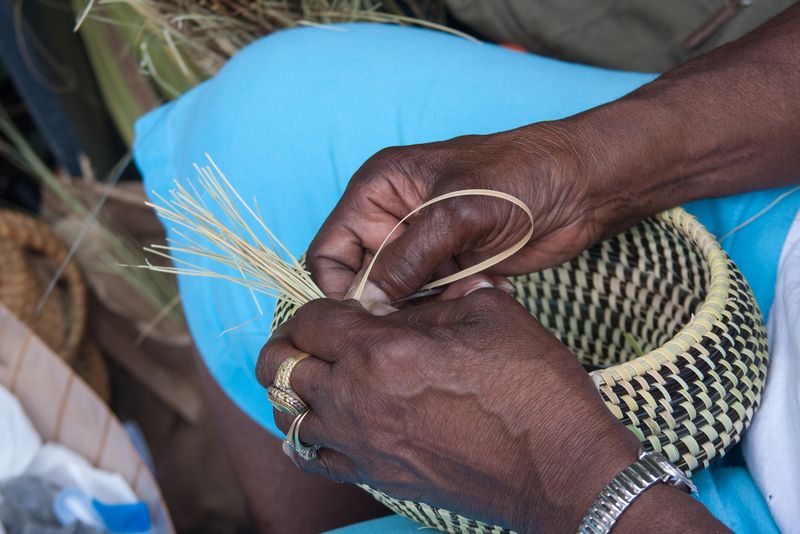
Advertisement
2. Historic Savannah Theatre
Located in Chippewa Square, the Historic Savannah Theatre first opened in 1818 and is one of the United States’ oldest continually operating theaters. Because of multiple fires inside the theater, it has served as both a live performance venue and a movie theater.
Since 2002, the venue has been host to a number of regular performances, but primarily musical revues. Not only has the theater been devastated by fire, but it’s also endured some wild weather as well. At one point just before the start of the 20th century, a hurricane-battered Savannah and tore sections of the roof off, and flooded the auditorium. One of the most unexpected guests to ever step foot on the stage of the Historic Savannah Theatre was baseball legend Ty Cobb, who in November of 1911 appeared in a performance called The College Widow.
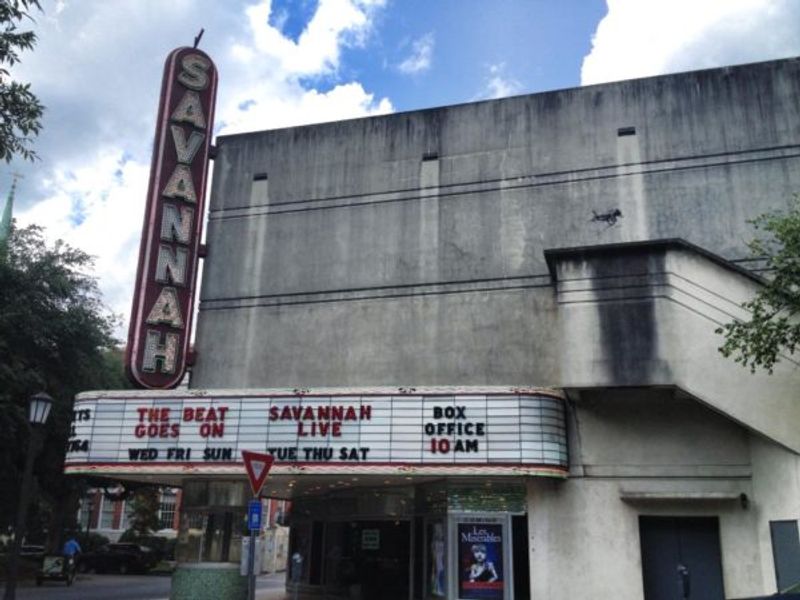
Advertisement
1. Savannah Historic District
The Savannah Historic District is a large urban historic district that corresponds roughly to the city limits of Savannah prior to the Civil War. In 1966 the area was declared a National Historic Landmark District and is one of the largest of its kind in the United States.
On average, the Savannah Historic District attracts millions of visitors annually to marvel at its 18th and 19th-century architecture and green spaces. Some sights to see inside the historic district include the birthplace of Juliette Gordon Low (the founder of the Girl Scouts of America), the Telfair Academy of Arts and Sciences, the First African Baptist Church, the Temple Mickve Israel, the Central of Georgia Railway roundhouse complex, the Colonial Cemetery, the Cathedral of St. John the Baptist and Old Harbor Light. Not only is the district home to a number of sites on this list, but it features a great deal more that will keep visitors entertained throughout their travels.
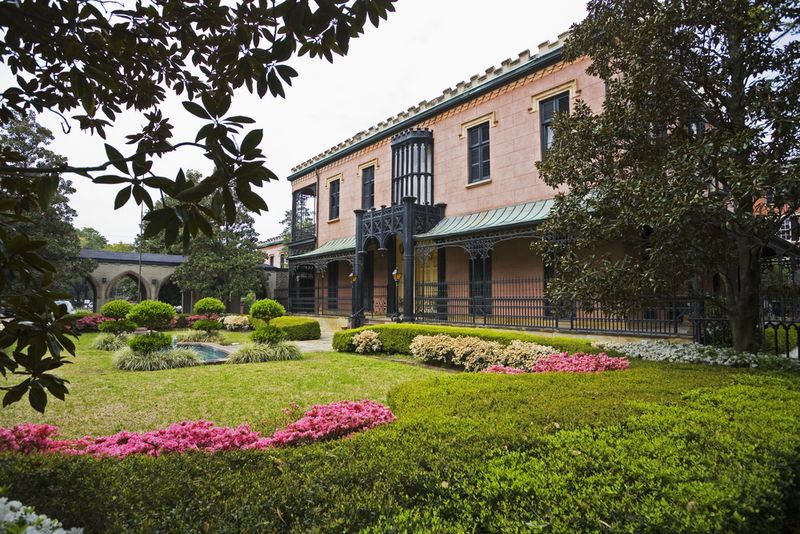
Advertisement